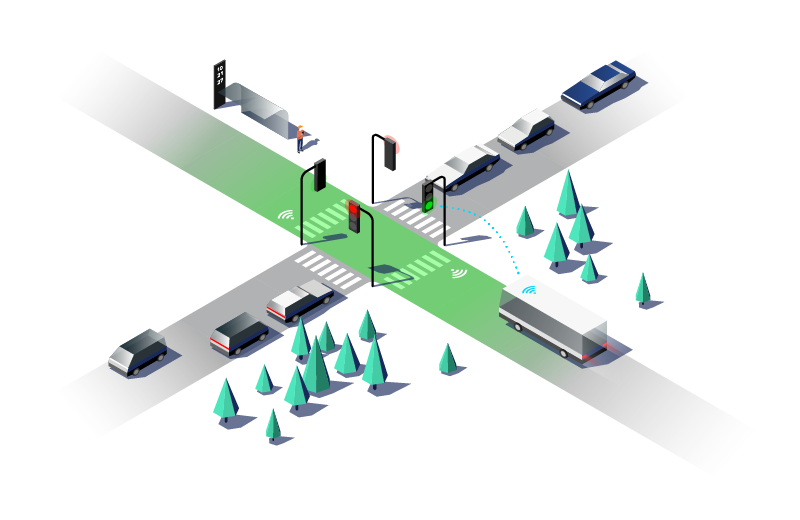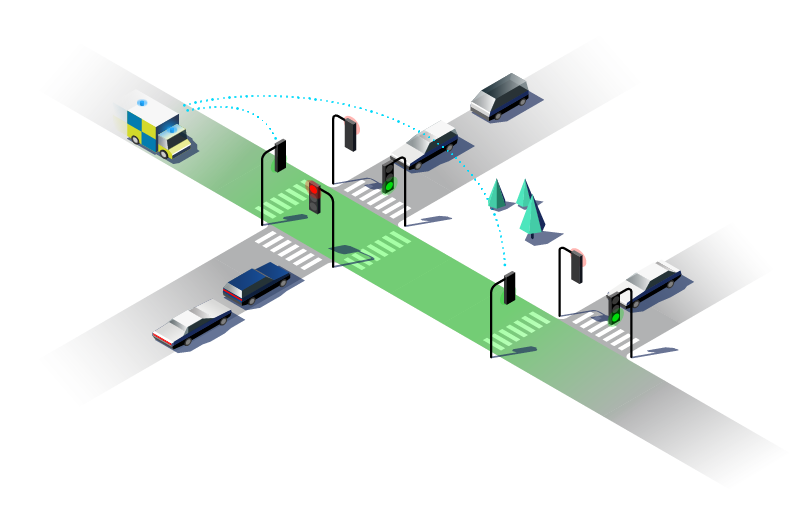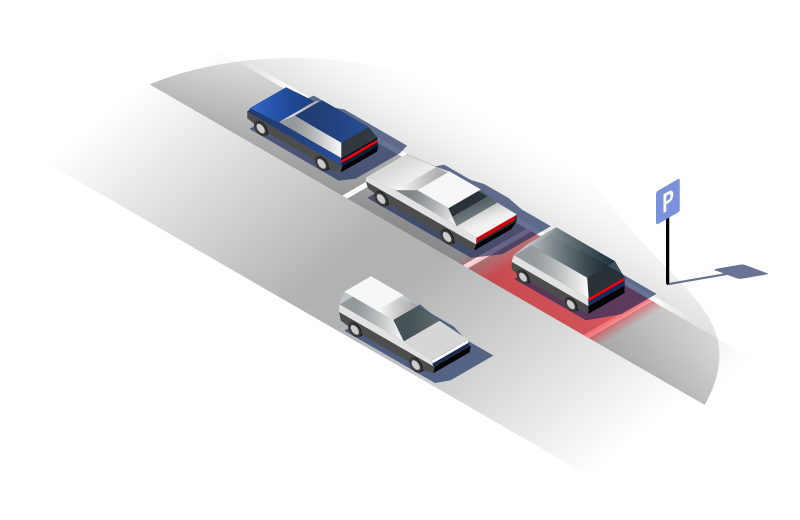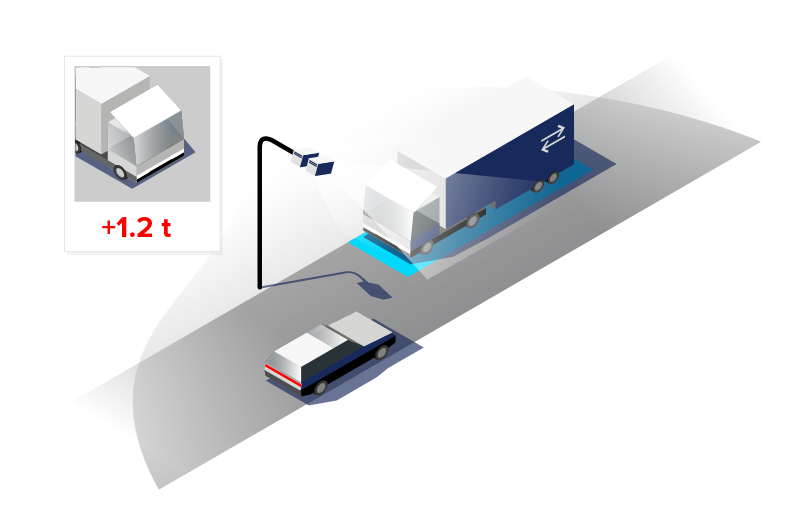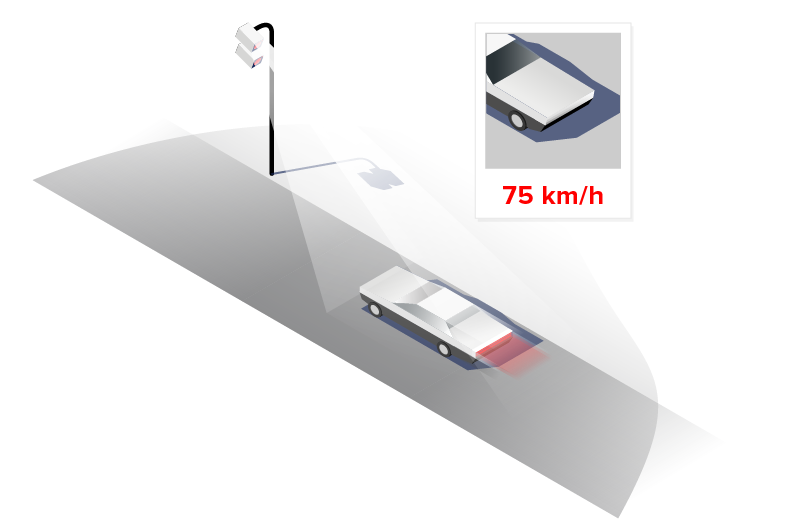
Volume, direction and composition
Invipo uses various techniques to monitor traffic. Both by using traffic counters with classification, i.e. sorting vehicles by type, and by using weigh-in-motion equipment. Other independent sources may also be available, such as from the mobile data network and increasingly live data directly from vehicles.

Traffic control
Intersection control adjusts timings according to current traffic conditions to reduce the level of necessary delay, optimise traffic flow and prevent accidents. An optional feature is the priority of the passage of public transport and emergency vehicles.

Navigation
Orientation in the city can be difficult for drivers, and the traffic situation is constantly changing. The system informs the driver directly on the way using variable message boards, as well as transmitting data to the navigation systems in the vehicles.
